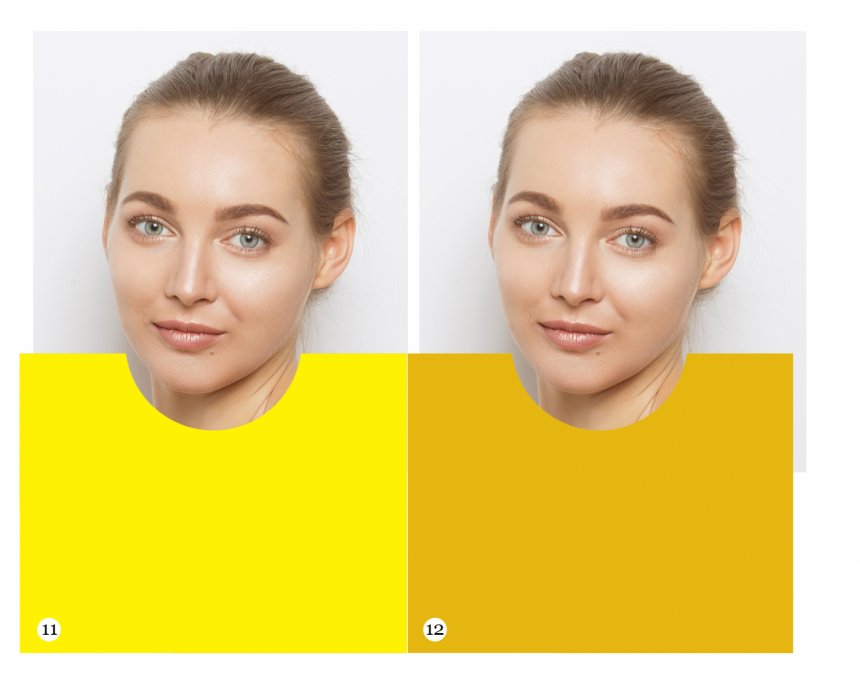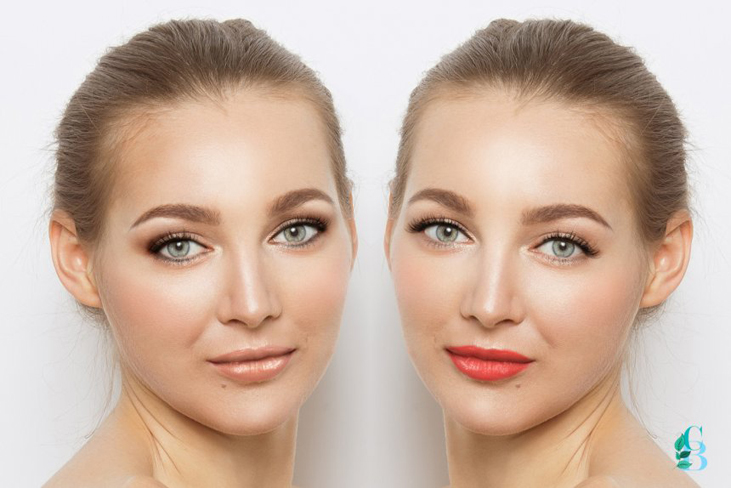Virtual Draping with my Face Flash Cards
I believe if you are a good color analyst that you should be able to assess someone down to at most six or fewer seasons, assuming you are using an advanced system like my ColorBreeze, which has a total of 28 seasons. Or about three if you use the 12 season system.
All without drapes.
Ideally, you can identify either their dominant trait (deep, light, clear, etc.) or a set of sister-seasons (Sunlit Soft Summer vs. Dusty Soft Autumn).
After that, if a person is a challenging one, this is where drapes or Face Flash Cards will be needed.
For this model, I could pinpoint her down to the sister-seasons (as could most of my Facebook followers, who have a very sharp eye for color – so proud of them 😊). But I needed my Face Cards to do the complete job.
So had a hunch she was a Sunlit Soft Autumn. But the clarity of her eyes suggested Spring. She's light in value, but those Sunlit Soft Autumns can be quite light, also. There is often a luminosity or glow to them that you don't find in other Autumns, most commonly seen in their eyes.
But then there is that glow in a Sunlit Soft Spring as well, simply because she is a Spring. But there is a definite hint of softness too.
Both are all-warm in their undertones. Simply put, they can look very much alike. And they share many of the same colors in their palettes.
This is where I needed to "drape" her using my Face Flash Cards to pinpoint her exact season. Most often, draping is necessary when one has to draw out a person's undertone, especially when they are a very blended season.
But since both seasons are all-warm, what I needed to narrow down was her value and chroma.
Soft Springs have a touch of softness to them. But way less than an Autumn does.
Autumns are deeper in value than most Springs, and even the lightest Autumns can still handle some of the deeper colors of Autumn palettes like tomato red, rust, chocolate brown, etc. At least they can handle it better than Springs can.
So let’s see how the Face Flash Cards work to determine this woman’s season
I'm abbreviating the full analysis for this post. But even so, we should be able to see how warm she was just by looking at her photo. Even if she were a blended season, we could tell she's more warm than cool.
So let's go directly to the Spring vs. Autumn cards:

This one is tough because the Autumn color, #12, seems to really 'match' her coloring. And in my opinion, this is what test draping is for: not to find a color that looks good on someone, because both look good, but to find one that matches her coloring. So for this step, I might choose the Autumn card.
But the Spring card seems to bring out the clarity that is in her and indeed seems to clarify her face a bit.
Let's try the second set of colors:

Testing Warm Sand (Spring #13) vs. Honey (Autumn #14), I see the Warm Sand being more clarifying and blending in more than Honey.

Between Lime (Spring) vs. Olive (Autumn), I think both look great on her. Having to choose only one, I'd say that the lime seems to be more harmonious.
So two out of three of the Spring-vs-Autumn cards pointed her to being a Spring. So I would choose Spring as her main season on the checklist.
Despite this showing Spring as the winner, the fact that they were very close, and especially the first one actually showing that Autumn might be a winner in that particular set of colors, this gives us some insight as well. It shows that this woman has some softness to her.
So let's take a look at the Spring sub-seasons.

Again, I will just use one step in the process, but know there are two more sets of colors, each with four additional steps. Above, we are testing yellows.
The first one is the brightest, most saturated yellow suitable for a Clear Spring. The next one is a light yellow, suitable for a Light Spring.
The next is the warmest and slightly 'heavy' golden yellow suitable for the Warm Spring.
The last one is a slightly softened shade of yellow, ideal for a Soft Spring.
First of all, all colors are good on her. All are warm and light and relatively clear. But the first one is slightly too bright (she's not a Clear Spring). The Light Spring and Soft Spring colors look best, not to mention very similar. The Autumn yellow, similar to the spring-vs-autumn test color at the start, is a great color on her and signals the fact that she can handle some depth (i.e., she is probably not a Light Spring).
Despite the lightest color looking good on her (#48), if a person is truly a Light Spring, it means 'light' is her dominant trait, and it's clearly not. Card #50, along with the other little clues we came across in previous steps, signals she is a Soft Spring.
I created some additional training that tells you how to identify people further if they are a Soft season or what they would be in my ColorBreeze Complete System. In case you haven't seen it yet, here are the links:
Finally, identifying all the clues and utilizing the concepts in the training, my final assessment is:
Sunlit Soft Spring

Return to Color Analysis Blog.



